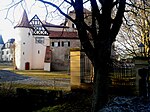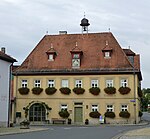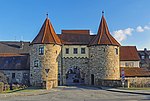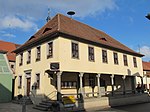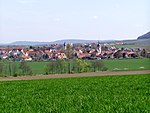County of Castell
Castell was a county of northern Bavaria, Germany, ruling a string of territories in the historical region of Franconia, both east and west of Würzburg. Little is known about the noble Counts of Castell, although they were the counts of Kreis Gerolzhofen, Regierungsbezirk, and Unterfranken of Bavaria. They were a member of the Fränkische Grafenkolleg ("Franconian Counts College"). The two main branches of the House of Castell were Protestant Castell-Remlingen (later split into Castell-Castell) and Protestant and Catholic Castell-Rüdenhausen. Castell was composed of three territories (Flecken) and 28 villages, with about 10,000 inhabitants at the time of mediatisation. The County of Castell joined Bavaria in 1806.
Excerpt from the Wikipedia article County of Castell (License: CC BY-SA 3.0, Authors).County of Castell
CV-383,
Geographical coordinates (GPS) Address Nearby Places Show on map
Geographical coordinates (GPS)
| Latitude | Longitude |
|---|---|
| N 49.75 ° | E 10.333333333333 ° |
Address
Loriguilla - Reva
CV-383
46393 , Residencial Reva
Comunidad Valenciana, España
Open on Google Maps


